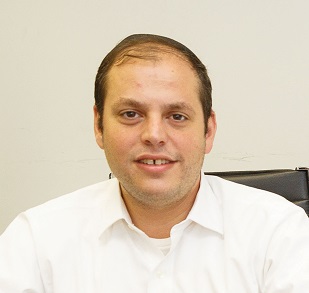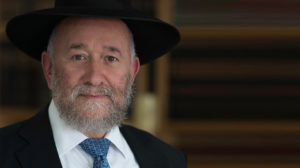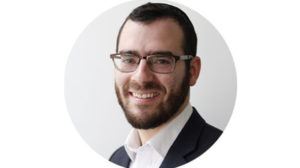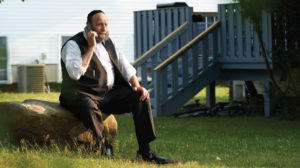It Belongs to You Too

How did Rav Shneor Potash wind up at the helm of Yeshivas Chachmei Yerushalayim a burgeoning mosad where the third siyum haShas of the zeman is being celebrated by a bochur next week?

Rav Shneor Potash was just 17 when he began giving shiur in the apartment of his late grandfather, Rav Chaim Zimmerman, which soon became a place where anyone who was serious about learning was welcome, without judgments. Two decades later, his yeshivah is famous for its bochurim completing Shas, in accordance with his motto that “learning Torah is a right, not a privilege”
H e never asked to become a rosh yeshivah — in fact it was the furthest thing from his mind when just a teenager himself he began to say a shiur in public. So how did Rav Shneor Potash wind up at the helm of Yeshivas Chachmei Yerushalayim a burgeoning mosad where the third siyum haShas of the zeman is being celebrated by a bochur next week?
Rav Potash’s foray into the world of innovative yeshivah leadership really begins in the Jerusalem apartment of his individualistic, forward-thinking grandfather, the illui Rav Chaim Zimmerman z”l. Rav Chaim, a child prodigy and nephew of Rav Baruch Ber Lebowitz of Kamenitz, came to the US at age 15, and it was soon clear that he was versant in the entire Talmud Bavli and Yerushalmi, as well as Rishonim and Acharonim. After receiving semichah from Rav Moshe Soloveitchik, he taught a Talmud class at REITS, and for many years was a rosh yeshivah at the Hebrew Theological College (Beis Medrash L’Torah) in Chicago, where he often entertained the bochurim with the “pin test” — they’d stick a pin in a random page of Gemara, and he would recite the page, and that very spot, verbatim.
His knowledge of both Torah and science was indisputable, and he published several books on halachah and philosophy. His best-known halachic work was Agan HaSohar, his resolution of the halachic debate regarding the international dateline. But he only published a limited number of copies, assuming not too many people would be able to understand it. (They used to say that he understood atomic structure and quantum theory as well as physicist Neils Bohr, when many other scientists were still scratching their heads over the new physics.)
But he was never a rosh yeshivah of convention, beginning with the way he dressed, swapping the traditional rabbinic frock for a casual short jacket. (The story goes that a rav once asked him why he didn’t wear a frock like so many others did, and he replied, “It says in the Gemara that a talmid chacham should wear a special garment. Now, when the am-haratzim stop wearing frocks, maybe I’ll start wearing one.”) Rav Chaim moved with his family to Jerusalem in 1972, where he continued to give regular shiurim from his living room on Achad Ha’am Street. It was a meeting point for talmidei chachamim, roshei yeshivah, and also for an assortment of professors and other like-minded intellectual souls who could follow the Torah and philosophy of this highly original and prolific genius.
And it was that very room that catapulted his grandson into the “accidental” position of rosh yeshivah.
Oops! We could not locate your form.












